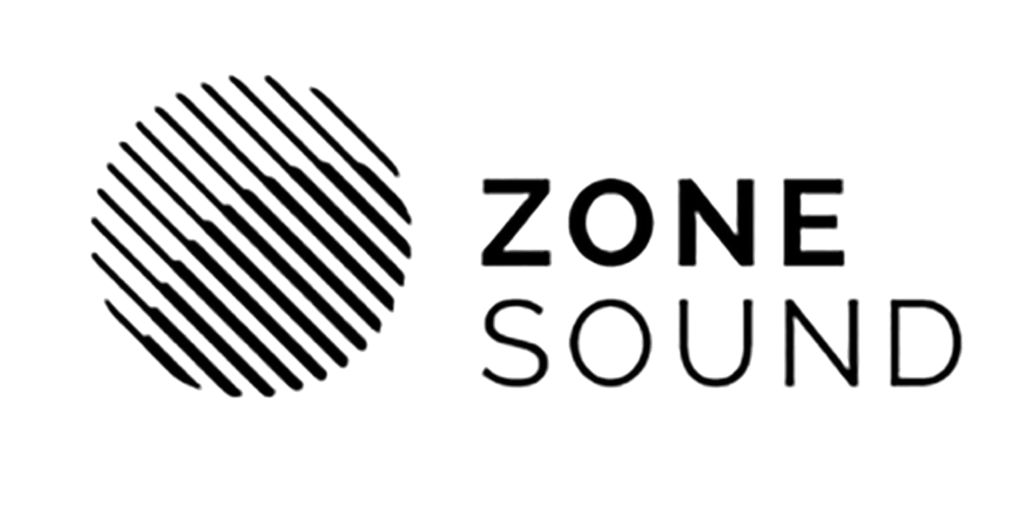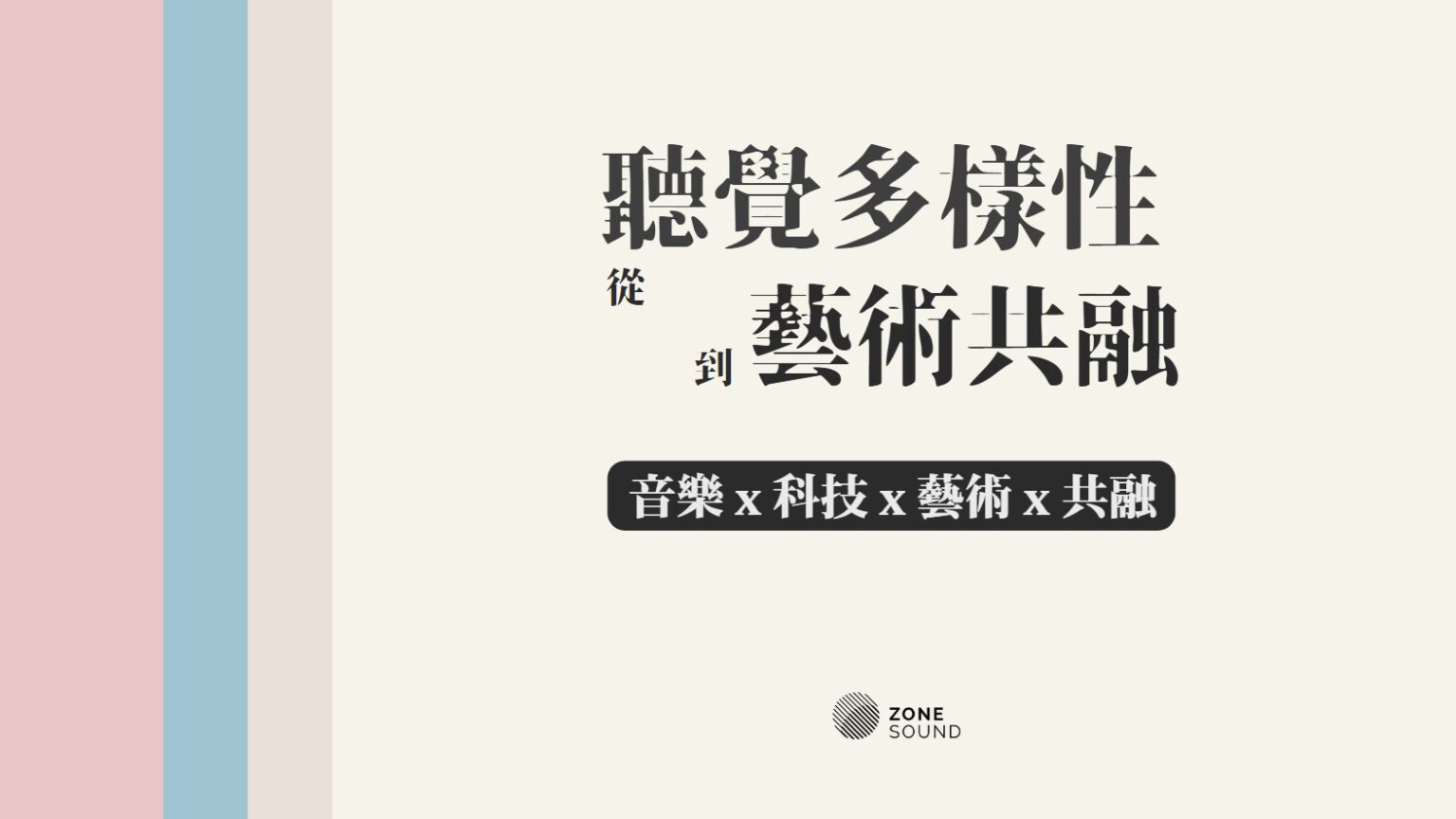
〈溯源計畫〉—— 汐止水岸聲音探索
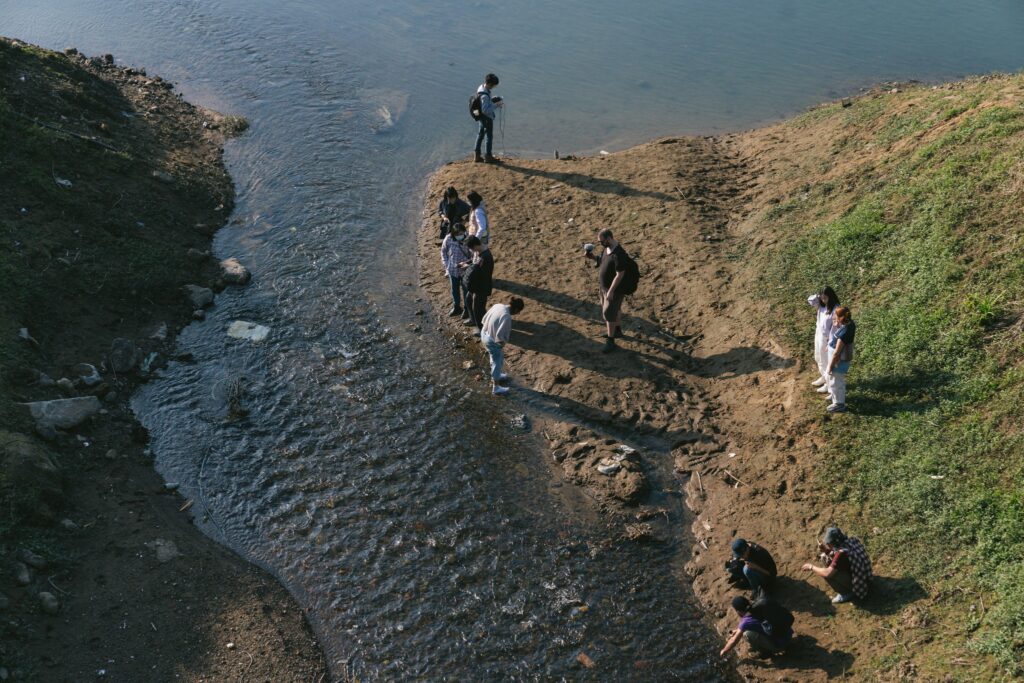
「汐止」的字面意思是「潮水的盡頭」,舊名「水返腳(Tsuí-tńg-kha)」,因基隆河漲潮到此又折返而得名。過去基隆河流穿過汐止一帶,當漲潮的時候,潮水會溯河而上直至汐止後折返,因此每當夜闌人靜的時候,便會聽到湍急的潮汐與砂石激盪出的「灘音」。然而現代的水利防洪設施的興建,使早期當地人形容為「聲如琴韻」的灘音已不復見,僅剩下「水」與附近遺留的景觀,成為我們在探尋過往聲音的重要線索。
在街道裡的兩場共學工作坊中,我們邀請參與者分享與水相關的經驗、製作簡易收音工具,並與在地文史團隊「返腳咖」沿著河岸行走。藉由聆聽、採集汐止當今的水文地貌等不同感測與紀錄方式,去體現人、水及環境間的複雜關係,並想像古今潮汐與城市的所激盪出的微觀聲響。
「汐止水岸聲音探索」工作坊於一個週末分兩天進行。活動旨趣在於讓參與者重新建立與水的連結,並且通過創作與探索,激發對城市水文地景的想像。第一天的工作坊,融聲創意團隊與工作坊參與者們集合在工作室,互相分享與水相關的個人經驗和故事。在導師的指導下,大家一起動手製作簡易的「接觸式麥克風」,將其塗上防水漆,變成一個簡單的水下麥克風(也稱為Hydrophone。)這個過程讓參與者們熟悉了接觸式麥克風的原理和製作技巧,為第二天的實地探索做好充分的準備。
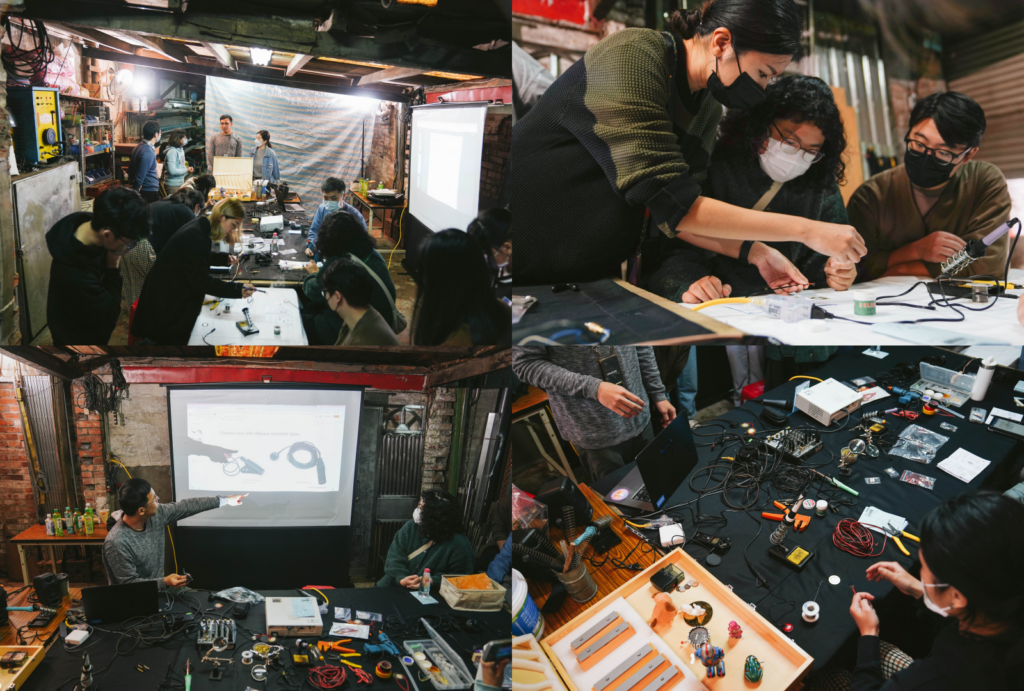
第二天,參與者們帶著自己製作的接觸式麥克風,沿著基隆河邊的河堤行走。在導師和在地文史團隊「返腳咖」的帶領下,實地參觀了抽水站、蓄洪池、河堤、涵洞、生態步道等與城市水文相關的場所。在河邊,參與者們將接觸式麥克風投入水中,聆聽到了水下的聲音。他們不僅聽到了水流的聲音,還能夠分辨出機械運作的聲音以及水面上的活動聲。
活動結束後,導師邀請大家分享他們錄製到的水聲以及聆聽的體驗。參與者們紛紛表示,這次活動讓他們對水有了全新的認識,對城市水文地景的想像也更加豐富。大家將自己錄製的聲音和照片上傳到網路,與更多人分享這次難忘的探索經歷。
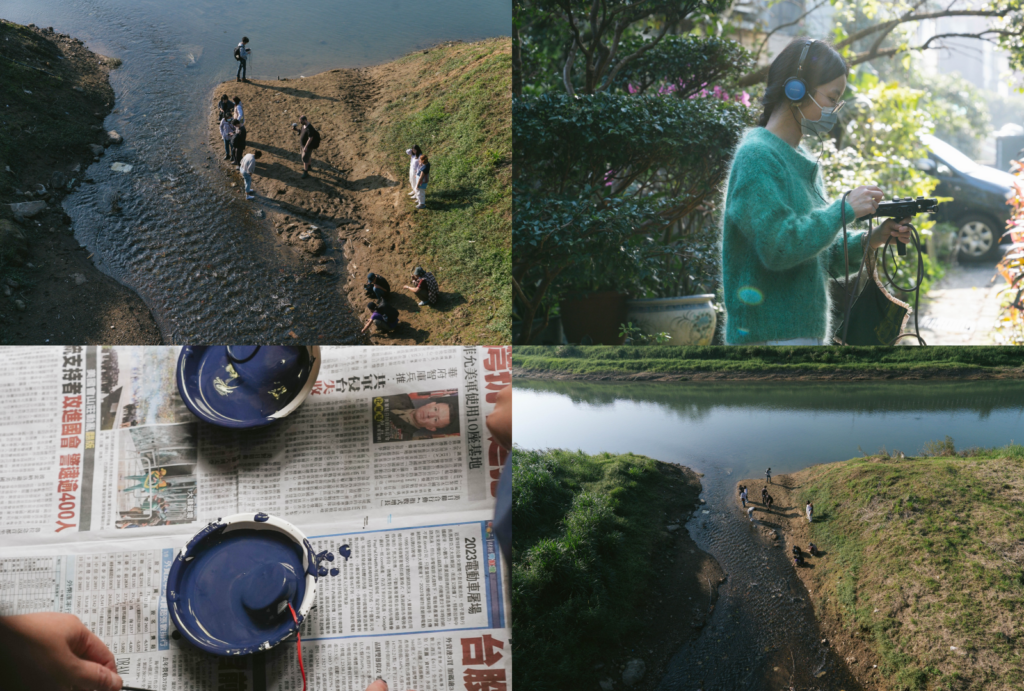
這次的「汐止水岸聲音探索」工作坊,不僅和學員們一起認識了水的多樣性,更讓希望讓大家意識到水與城市之間、水與人之間的密切關係。透過這樣的實地探索和聆聽體驗,參與者們能夠反思人類對水資源的使用和管理方式,同時意識到生態保育與環境永續的重要性。
經由「汐止水岸聲音探索」工作坊,融聲創意團隊嘗試將聲音藝術與環境教育相結合,提高了參與者對水資源和水文地景的關注。這樣的活動為我們的城市空間增添了更多色彩,也提醒著我們重新審視人與自然的關係,共同努力營造一個更美好的家園。
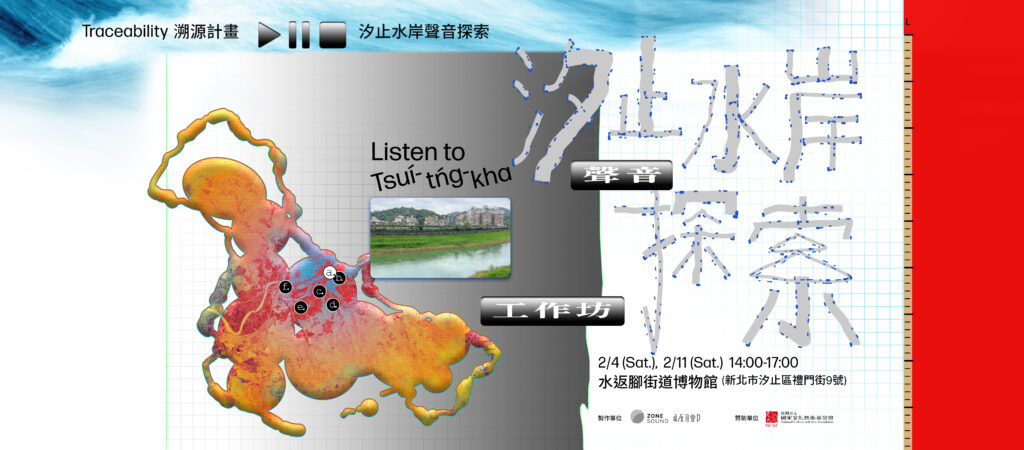
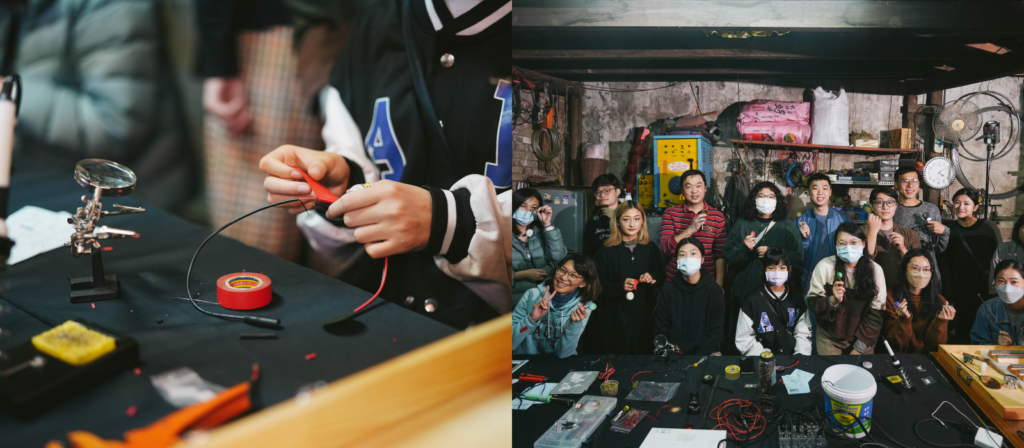
The “Xizhi” district in New Taipei City means “the end of the tide” and was formerly known as “Tsuí-tńg-kha.” In the past, the Keelung River flowed through the Xizhi area, and when the tide was high, it would go up the river until Xizhi and then turn back. When the night was quiet, the locals would hear the “Tanyin” of the turbulent tide and gravel. However, with the construction of modern flood control facilities, the “Tanyin” has disappeared, leaving only the river and the nearby landscape as clues of the sounds of the past.
In the workshops, we invited participants to share their experiences with water, make simple contact microphones, and walk along the riverbank with the local culture and history research team to observe water pumping stations, flood storage ponds, river banks, culverts, eco-trails, and other sites related to urban hydrology. By listening and collecting the hydrographic features of the city, we will properly gain a new understanding of the complex relationship between people, water, and the environment and be able to imagine the microscopic sounds of the tides in the past and present.
◉ 地點|水返腳街道博物館(新北市汐止區禮門街9號)
◉ 日期|2/4(Sat.)、2/11(Sat.)
◉ 時間|14:00-17:00
◉ 製作單位|融聲創意工作室、返腳咖
◉ 贊助單位|國藝會
相關文章


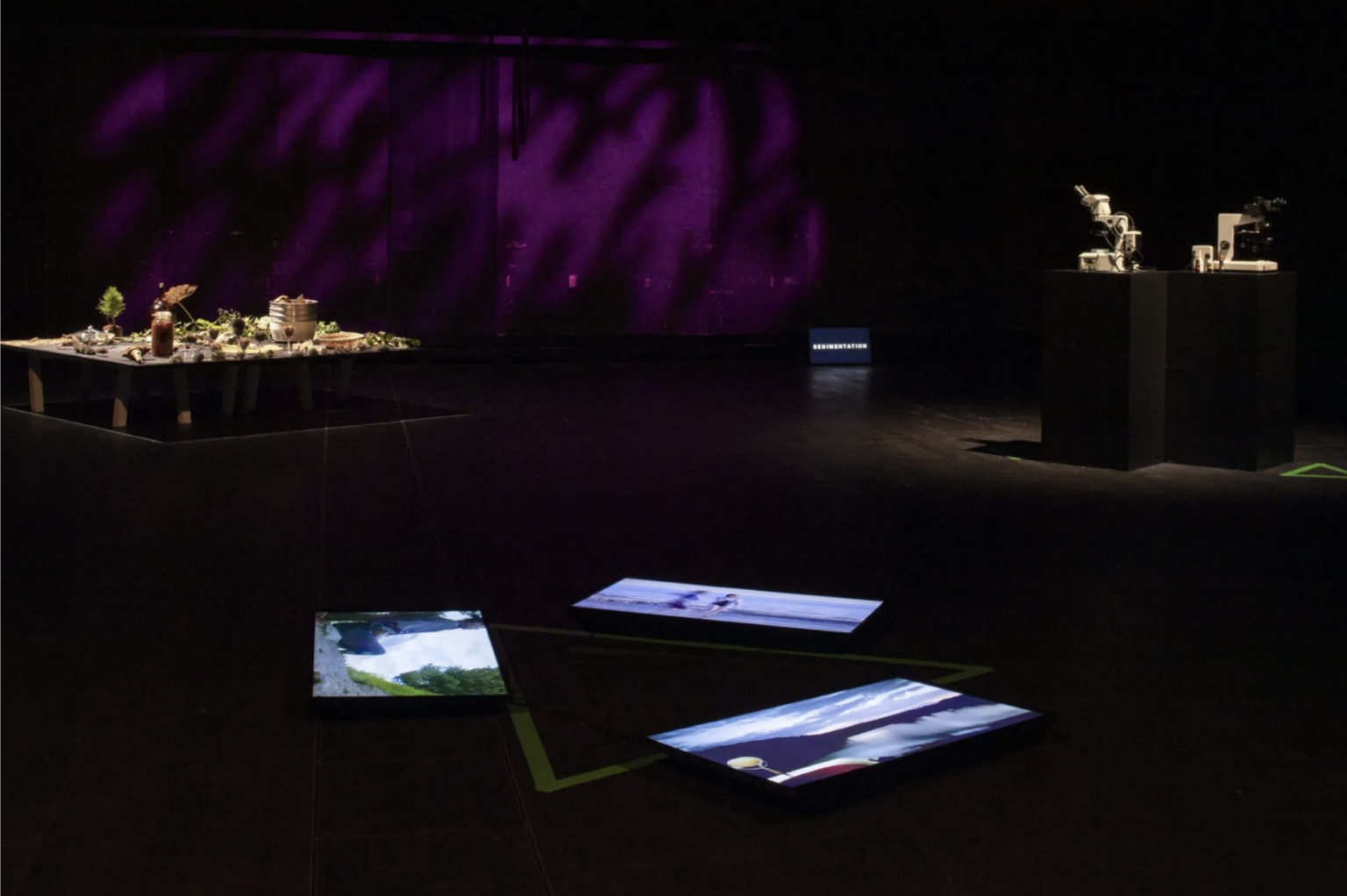
從科學家視角看待藝術與科學的跨域合作:以《真菌宇宙學 Fungi Cosmology》為例
跨域合作反映了人們對世界日益複雜的理解需求,不僅拓展了知識的界限,也帶來全新視野和思維。觀察當前的跨領域合作案例,藝術家
